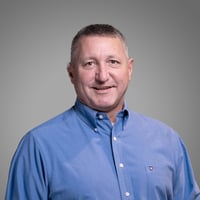OneWeb Technologies Announces NIC4 as Distribution Partner
Houston, Texas and Tampa Bay, Florida - October 26, 2022- OneWeb Technologies, a global provider of high speed, low latency, secure, multi-orbit...
We provide solutions to an array of industries.
Supporting your global communications
Connecting your clients no matter where
Network management and proactive monitoring
Tailored solutions from concept to delivery
Bespoke applications for optimal efficiency
Electrical, retrofits, installations and more
Technical Support
Supporting your global communication needs throughout your organization
On-Site Support
Supporting your global communication needs throughout your organization
3 min read
Network Innovations : Feb 15, 2024 9:37:22 AM

By Todd Lizambri, Vice President of Software Engineering
Software development, satellite communications, and the steps to building a dynamic and domain-agnostic system. Let's explore.

A domain-agnostic system in software development refers to a system that is designed to be versatile across various domains or industries. This offers advantages in terms of scalability, interoperability, speed of development, and future-proofing – all key features mentioned in our three previous blog postings.
Taking a domain-agnostic approach empowers satellite operators to quickly embrace emerging technologies, removing the need for substantial re-development with each new mission. Referring back to our last article, “Advancing Satellite Software Development: A Cloud-Native, Scalable Approach”, the adoption of services built using microservices and container technologies ensures components can be quickly adapted and scaled. However, there’s more that can be done to extend and future-proof your solution.
As we conclude this series, let's cover some essential steps required to take this approach.
An Adaptive Object-Model
Let’s start by talking about an Adaptive Object-Model (AOM) – a system that represents user-defined objects, attributes, relationships, and behavior in an object-oriented domain model as metadata. It’s a common architecture in systems that emphasize flexibility, meaning end users can customize the entities defined in the system to better suit their specific needs and preferences.
It helps users remain agile, allowing for rapid development and deployment of new technologies – something that both military and commercial applications benefit from. In the case of satellite communications, an AOM allows for easy adoption of new technologies under the control of their management software system, without requiring extensive development cycles.
But, how? Working with this approach in software development involves employing object-oriented principles. In traditional designs, classes represent business entities with attributes and methods. In contrast, AOMs use descriptions to model entities, allowing immediate reflection of operational changes. It’s important to mention that achieving an AOM is an ongoing process, that requires the regular review of the design as requirements evolve.
Built-In Workflow & Configuration Management
At Network Innovations, our efforts have shown that combining an effective workflow with revision control practices is crucial for the successful and efficient management of satellite equipment and services. An example of this concerning SATCOM, where precision and reliability are key, is the tracking of changes to satellite component capabilities and configuration, allowing for a clear understanding of its evolution over time. Maintaining current information and having traceability to the changes results in more accurate and efficient planning and mission execution.
Here’s a further definition of these characteristics:
Enterprise Schema
The term enterprise schema in the context of enterprise data management refers to data model that attempts to give an overview of all entities represented within an enterprise. It’s a complete and standardized representation of the data architecture, data types, security classification, taxonomy, and enumerated values used across various business units and processes.
By taking this approach towards development, our team can achieve a higher degree of consistency and security. Considerations for data security can be included within an enterprise schema – aligning with industry regulations governing mission data.
In addition, a standardized approach to managing information further facilitates interoperability by defining a common data model – enabling seamless machine-to-machine communication between diverse software components, industries, and domains.
Rapid Deployment
The integration of flexible reporting in SATCOM software development empowers users with the tools to efficiently monitor, analyze, and optimize their operations. This not only enhances operational visibility but also contributes to proactive issue resolution and the overall performance of satellite systems.
A key consideration is training, to ensure users understand how to interpret and leverage their data. Our end users are informed on the capabilities of flexible reporting and can tailor reports to their unique needs.
There’s also data enrichment. In this case, data enrichment refers to the process of enhancing raw status, performance, and utilization (SPU) data with additional context or external information to provide a complete dataset. Key practices include:
Satellite operators, service providers, and customers or mission partners relying on SATCOM services want to experience the full potential of their solutions, capitalize on all available features, and see the advantages of information dominance – and while there may be some differences in the specific requirements and security measures between the two domains, many fundamental SATCOM software functionalities are relevant for both commercial and military users. The dynamic and domain-agnostic nature of a system is no exception to this.
Previous Blog – Advancing Satellite Software Development: A Cloud-Native, Scalable Approach
More Info – https://www.networkinv.com/service/software-development

Houston, Texas and Tampa Bay, Florida - October 26, 2022- OneWeb Technologies, a global provider of high speed, low latency, secure, multi-orbit...

TAMPA, Fla., Sept. 20, 2022 — NIC4, a division of Network Innovations, has been awarded the development of the Mission Profile Registry Service...
.png)
Every second matters in emergencies, making modern communication systems crucial for public safety. In the wake of National First Responder Day in...